The Sound Inside, the six-time Tony-nominated, Broadway debut play by Adam Rapp takes us back to the theater and inside the intimate confines of SpeakEasy Stage. There, the inner world of two characters unfolds like a hall of mirrors on an almost empty set. THE SOUND INSIDE is a brilliant play, deafening and quiet, a mystery of fact and fiction as we watch two characters connect in their isolation and loneliness. They are both writers– one a student, one a teacher of the craft of creative writing–and they are both plenty crafty. The play is not only about the stories they write and how to write them, but also about the stories they and we tell ourselves and each other, and the universe between the lines.
Bryn Boice directs the sublime Jennifer Rohn as Bella Baird (“Baird” is the playwright’s late mother’s maiden name!) who emerges from the dark and introduces herself in the play’s opening lines:
“A middle-aged professor of undergraduate Creative Writing at a prestigious Ivy League University stands before an audience of strangers…as certain as old trees. Gently creaking in the heavy autumn air.”
This old tree immediately tensed her limbs and leaned in. Rohn’s cadence is at once gripping, (though sporadically halting) understated, and deadpan hilarious. (Her character’s minutely observed description of a one-night stand later in the play will make me laugh forever.)
It took me a bit to warm up to Nathan Malin as Christopher Dunn, a student of Baird’s who suddenly “hovers at the threshold” of her office, without an appointment. But Baird lets him in and together they head through a portal to parts unknown. Malin is too crudely abrupt in his delivery, which makes his brash young literary buck (unusually and unbelievably articulate) more hard to take than he needs to be as he pontificates on modern life, from Twitter– “cheap Haiku,” to baristas– “tatted-out Hobbits.” But this student likes Baird’s class and he’s writing a novel. So has she. She becomes his reader, and these two unreliable narrators (are there reliable narrators?) stay one step ahead of us, charting a course nowhere you’d expect, but somehow where each must inevitably go.
Mentoring, friendship, and more, ensues. The ending is a puzzle of questions and potential answers laced with an inexplicable death, metaphorically echoed by the ellipsis which concludes Christopher’s manuscript. Mortality is at the heart of both their stories– the teacher’s and the student’s, and a theme of the authorial greats they regularly name drop: Dostoyevsky and Balzac (Baird’s image of God) Wharton and Beckett, all of them grappling at the edge of the abyss, their works a stab in the dark.
As I think about the title, I think about the artistry employed by writers to process all the slings and arrows beyond our control– illness, death, loneliness– by spinning illusions and attempting to find the sounds, the words to give meaning to the inchoate. “In the beginning was the word” and what emerges out of the darkness–and arguably on any stage– is a writer, sometimes front and center, telling a story and creating a world that might provide meaning.
And so this dark and mostly empty set is a perfect foil for Rapp’s elaborate language, the rococo turns of phrase wrapped around absurdly funny metaphors, cathartic invective, and flights of fancy spun by Bella and Christopher, the darkness suggesting the void they are doing their best to avoid. Even so I think the play’s voluptuous language might have benefitted from a little ingenious staging/effects to reinforce the play’s themes re: the fleeting nature of the physical world and our attempts through language to pin down the ephemeral.
Ultimately, I saw the play as an elaboration on something the professor advises her student about writing: “If your protagonist is leading you then you’ll likely stay ahead of your reader.” Rapp has done that; he’s followed his muse and the mystery, wrapping his gorgeous words around it in the forest of an audience where the sounds can be heard and discussed, a sound inside the void… But if you’re looking for a plot-driven tale of a May December romance, or a score-settling saga of sex, death, and English teachers– you’re barking up the wrong tree. We will not know the rest of this story or understand all that’s come before; instead, we are chasing the ellipses together –and is there really any more than that?
See THE SOUND INSIDE and let me know what you think. Through October 16 at SpeakEasy Stage!

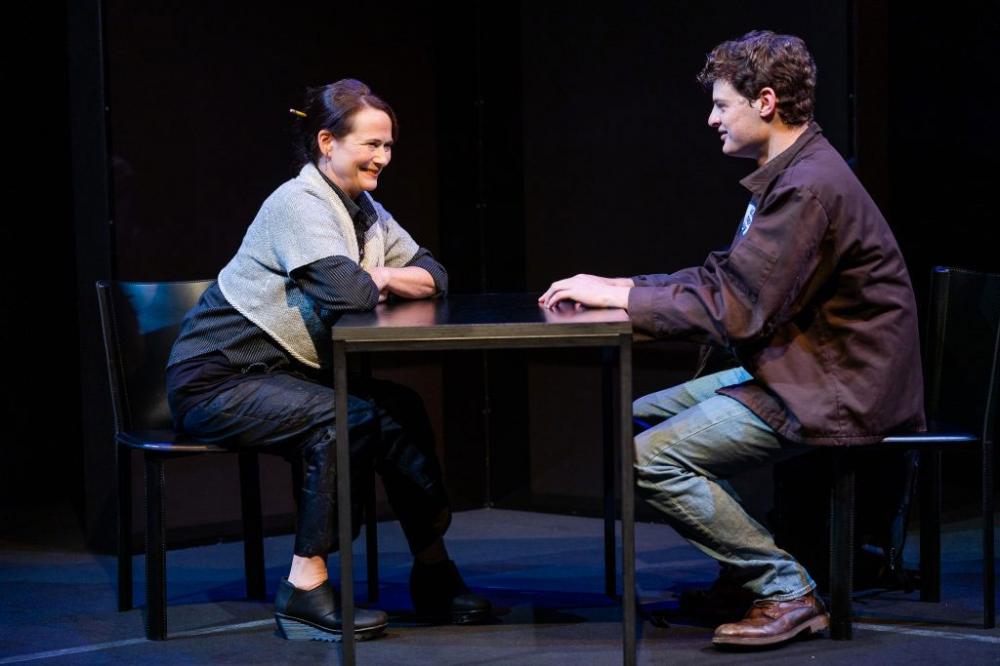

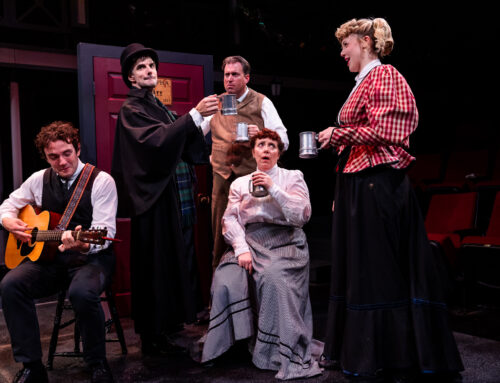
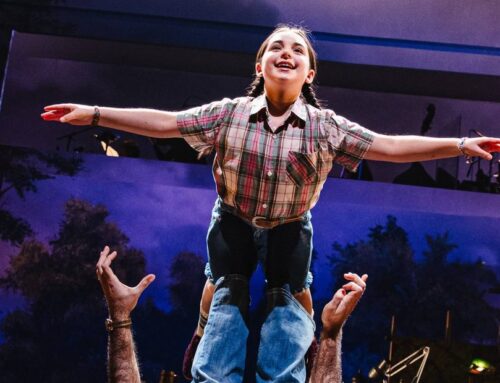
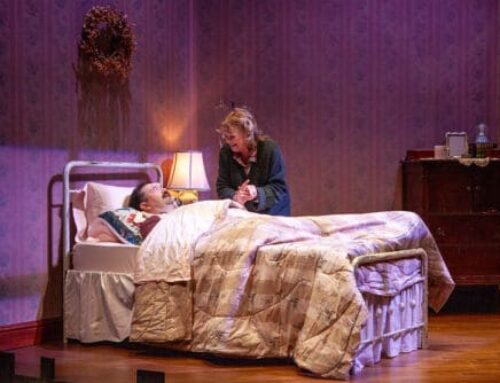
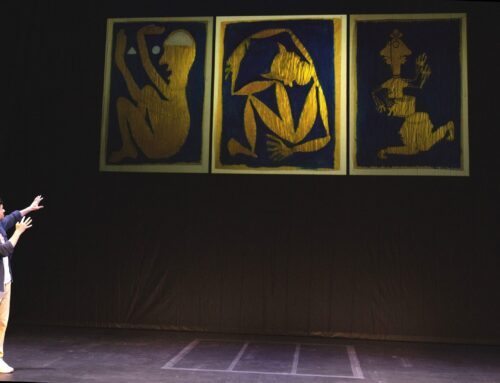
Leave A Comment
You must be logged in to post a comment.